![]()
![]()
![]()
Use LEFT and RIGHT arrow keys to navigate between flashcards;
Use UP and DOWN arrow keys to flip the card;
H to show hint;
A reads text to speech;
52 Cards in this Set
- Front
- Back
|
Structural angular relationship vs Positional angular relationship
|
Positional
The measured angle can change with pronatory or supinatory forces acting on the foot Structural The measured angle does not change with pronatory or supinatory forces acting on the foot |
|
|
Forefoot Adductus Angle
-What plane -What line? |
- the position angle that represents the reelationsh0p between the forefoot and the rearfoot
-It is a transverse plane deformity -Angle between longitudinal bisection of the calcaneus and bistction of the 2nd Metatarsal |
|
|
What is the ideal Forefoot adductus angle?
What causes angular changes? |
8 degrees adducted
angle increases with supination and decreases with pronation - Due to the calcaneus |
|
|
Metatarsus Adductus Angle
What plane? What is the line? |
Structural angle that
represents the relationship between the forefoot and the midfoot. Transverse plane deformity Angle between the Longitudinal Bisection of the lesser tarsus and the bisection of the 2nd metatarsal |
|
|
What is the normal Metatarsus Adductus Angle?
|
Normal value is 10-200
Note the metatarsals are adducted on the midfoot As an aside:An MA angle > 15 affects surgical planning |
|
|
Cuboid Abduction Angle
What plane? What lIne? |
Positional angle that estimates the amount of abduction the midfoot has on the rearfoot
Transverse plane deformity Angle between the longitudinal bisection of calcaneus and lateral aspect of the cuboid If the calcaneal bisection can’t be determined, use the lateral aspect of calcaneus |
|
|
Cuboid Abduction Angle
Normal value What increases/decreases angle? |
Normal 0-5
Increases with pronation and decreases with supination (due to the calcaneus) |
|
|
Talocalcaneal Angle
What is another name? What is the plane of deformity? What line? |
This positional angle is used as an index of relative foot pronation and supination
Transverse (and frontal) plane deformity If severe, can indicate a transverse plane deformity in tibia Angle between the longitudinal bisection of the talus and the longitudinal bisection of the calcaneus |
|
|
What is Normal Talocaclaneal Angle?
What increases or decreases the angle? |
Normal is 17-21
increase with pronation Decrease with supination Due to talus (1deg) and calcaneus |
|
|
What is talonavicular congruity?
What is normal? |
The relationship
(amount of joint contact) between the talus and the navicular Normal 75% articulation |
|
|
Talonavicular congruity
What increases or decreases congruity? What bone? |
Decreases with pronation
increases with supination - due to the talus |
|
|
Digital Abductus angle
-what plane? What line? - What is normal? |
This angle is the estimation of the deviation of the second toe from the second metatarsal
Transverse plane deformity The greater the forefoot adductus angle the greater the digital abductus Normal abducted about 110 |
|
|
What is calcaneal inclination angle?
What deformity? |
This angle is the determinate of the relative
arch height and as such varies with foot type Sagittal plane deformity Angle between the inferior surface of the calcaneus and the weight-bearing surface |
|
|
Calcaneal inclination angle, what affects it?
What is average? |
Not affected by supination or pronation
Average 25degrees |
|
|
What is talar declination angle?
What is the deformity What is the line? |
This positional angle represents the amount
of plantarflexion of the talus Sagittal plane deformity Angle between the longitudinal bisection of the talus and the weight-bearing surface |
|
|
Talar declination angle
What is normal What increases/Decreases what bone? |
Normal 210
This angle increases with pronation and decreases with supination Due to talus |
|
|
Lateral Talocalcaneal Angle
What plane deformity What line? |
This positional angle is very useful to assess
the pronatory and the supinatory status of the STJ Sagittal plane deformity Angle between the longitudinal bisection of the talus and the pitch of the calcaneus |
|
|
Lateral talocalcaneal Angle
What is normal What increases/decreases what bone? |
Normal 40-50
increase w/ pronation decrease w/ supination due to the talus |
|
|
First metatarsal declination angle
What plane deformity? What "classification?" What is normal? |
This angle estimates the amount of first
metatarsal plantarflexion Sagittal plane deformity This angle is both structural and positional. With pronation the first ray dorsiflexes, thus decreasing the angle Normal 210 |
|
|
What is Meary's angle?
what is the deformity? |
Lateral-Talo First Metatarsal
Angle (Meary’s Angle) This angle represents the relationship between the declination of the talus and the declination of the 1st metatarsal Sagittal plane deformity |
|
|
What does Meary's angle indicate?
What classification? |
Indicates the stability of the first ray,
Both a structural and positional angle |
|
|
What does positive or negative meary's angle represent?
What is normal? |
Positive angle (1st ray dorsiflexed) reflects
forefoot and first ray instability 1st met bisection is above talar bisection Negative angle (1st ray plantarflexed) reflects forefoot and first ray stability 1st met bisection is below talar bisection Normal +/- 40 |
|
|
What is Cyma Line?
|
lazy S that indicates congruity of the midtarsal joint
|
|
|
What does a broken Cyma line mean?
|
means that surfaces are not congruous.
|
|
|
How does the cyma line look in pronation?
Supination? |
Pronated= anterior break (TN in front of CC)
Supinated = posterior break (TN behind CC) |
|
|
Sinus Tarsi indicates what?
What is its normal appearance? Appearance in Pronation? Supination? |
Indicates proper alignment of the talus on the calcaneus (positional only)
Normal is oval Pronated is obliterated supinated is bullet hole. |
|
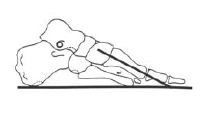
|
1st met declination
|
|
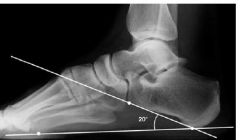
|
Calcaneal inclination normal
|
|

|
Calcaneal inclination angle normal
|
|
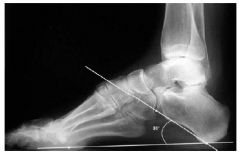
|
Calcaneal inclination angle supinated
|
|
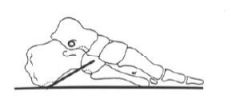
How to draw?
|
Calcaneal inclination angle
|
|
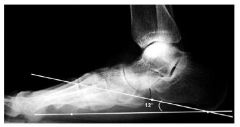
|
Calcaneal inclination pronated
|
|
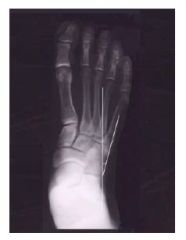
|
Cuboid Abduction
|
|
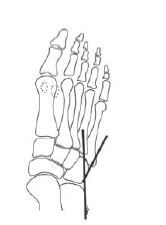
How to draw?
|
Cuboid Abduction
|
|
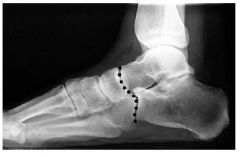
|
Cyma Normal
|
|
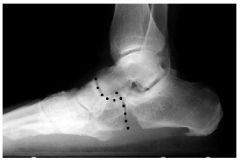
|
Cyma pronated
|
|
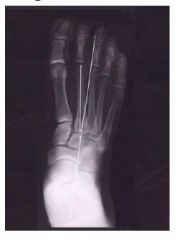
|
Forefood Adductus
|
|
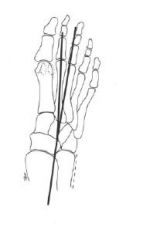
How to draw?
|
Forefoot Adductus
|
|
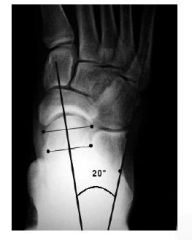
|
Kites Normal
|
|

|
Kites pronated
|
|
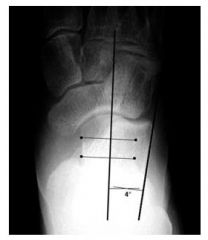
|
Kites supinated
|
|
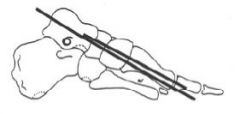
How to draw?
|
Lateral talo First Met
MEarys |
|
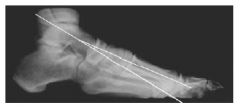
|
lateral Talo first Met
Meary's |
|
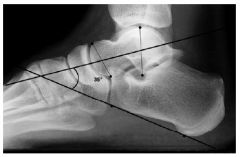
|
lateral Talocalcaneal Normal
|
|
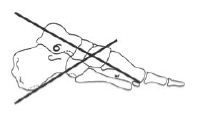
How to draw?
|
lateral Talocalcaneal
|
|
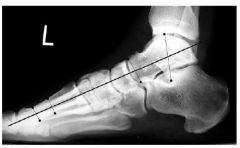
|
Meary's normal
|
|
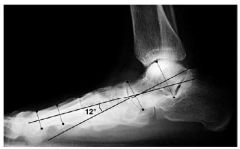
|
Meary's pronated
|
|
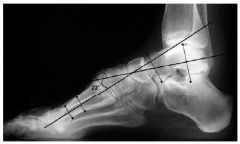
|
Meary's
|
|
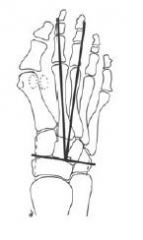
How to draw?
|
Metatarsus Adductus
|
|
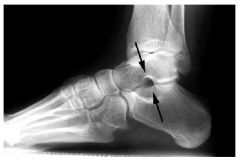
|
Sinus tarsi supinated foot
bullet hole |
|
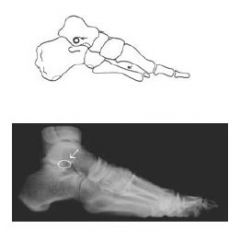
|
Sinus tarsi
|
|
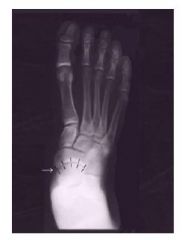
How to draw?
|
Talonavicular congruity
|

